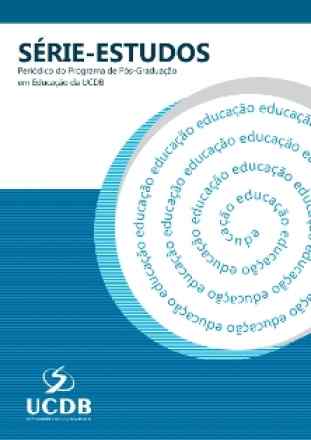A DOR E O SOFRIMENTO COMO PRECEITOS EDUCATIVOS PINTADOS POR GIOTTO DI BONDONE EM O MASSACRE DOS INOCENTES
Série-Estudos
A DOR E O SOFRIMENTO COMO PRECEITOS EDUCATIVOS PINTADOS POR GIOTTO DI BONDONE EM O MASSACRE DOS INOCENTES
Autor Correspondente: Terezinha Oliveira | [email protected]
Palavras-chave: Educação. Dor/sofrimento. Giotto di Bondone
Resumos Cadastrados
Resumo Português:
O objetivo desse texto é verificar em que medida Giotto (1267-1337) registrou em suas pinturas valores educativos presentes nos séculos XIII- XIV. Adotamos para análise iconográfica O Massacre dos Inocentes pintado na Cappella degli Scrovegni em Padova, Itália. A hipótese investigada é construída por meio da ideia de que a dor/sofrimento, pertinentes a todos os homens, faz parte do processo que tem por fim o bem. Dessa forma, esses sentimentos podem ser entendidos como elementos educativos para o homem medieval e registrados por Giotto ao pintar a cena em que Herodes manda matar os meninos com idade próxima a de Jesus com o propósito de pôr fim na vida do Messias. Assim, pudemos verificar que Giotto, ao colocar os inocentes mortos ao chão e uma Igreja ao fundo da cena, estaria indicando que o caminho para a construção da Igreja de Jesus (o bem) foi erigido por meio da dor/sofrimento, o que está em conformidade com a hipótese sugerida para este estudo.
Resumo Inglês:
The aim of this text is to verify in wich way Giotto (1267-1337) registered in his paintings the educative values of the XIII-XIV centuries. We adopted for iconographic analysis the painting The Massacre of Inocentes, in the Capella degli Scrovegni, in Padova, Italy. The investigated hyphotesis is build on the idea that pain/suff er, present in all human beings, is part of the process wich aims at good. In this way, those feelings can be understood as educative elements for the medieval man and registered by Giotto in the painting in wich Herodes orders to kill all the boys with age close to Jesus with the purpose to put an end into the Messiah’s life. So, we could verify that Giotto, by puƫ ng the dead inocents on the floor and the church in the scene background, would be indicating that the way to the construction of the Church of Jesus (the Good) was built through pain/suff er, which complies with the hyphotesis sugested for this study.

